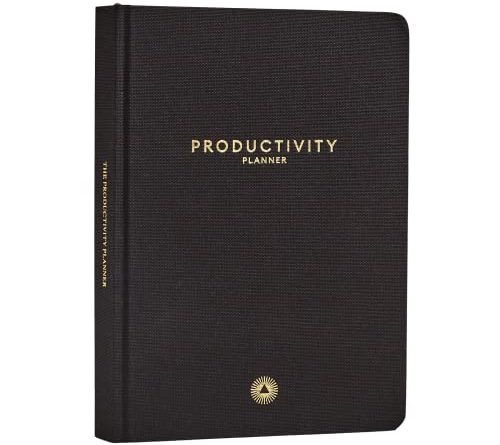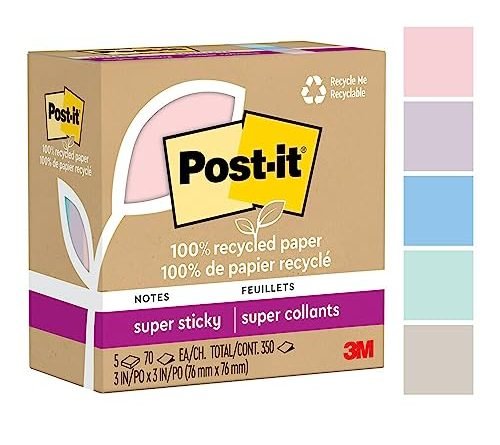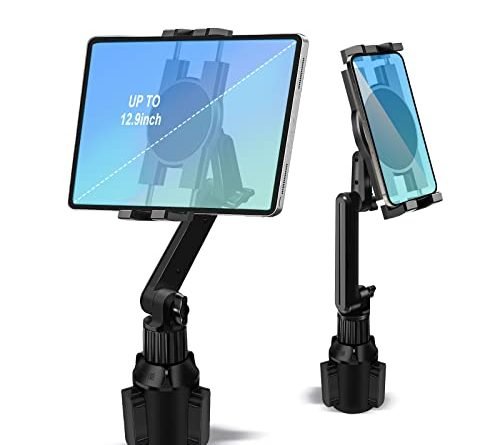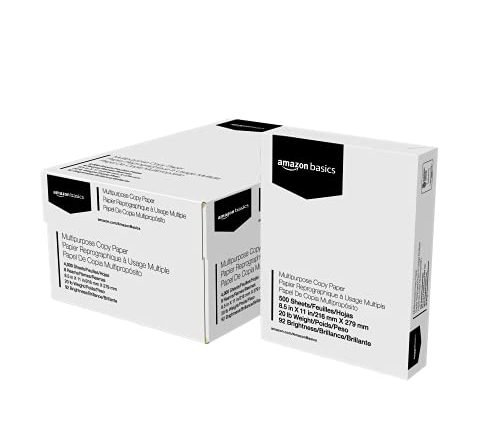
Hey there! Are you struggling to stay on top of your to-do list? Feeling overwhelmed with all the tasks and deadlines? Well, you’re in the right place! In this blog post, we’re going to talk about something that can be a game-changer for your productivity – a planner. We know how hectic life can get, and that’s why we’re here to help you make the most out of your planner. So, get ready to take control of your time, set clear goals, and accomplish more with these 10 tips for maximizing your productivity with a planner. Let’s dive in!
Get Organized and Achieve More with These Top Productivity Planners!



Choose the Right Planner for Your Needs
Finding the perfect planner can make a world of difference in organizing your life and staying on top of your commitments. With so many options available, it’s important to choose a planner that suits your specific needs and preferences. In this blog section, we will discuss key factors to consider when selecting a planner, including layout, size, and functionality.



Layout: Find Your Style
The layout of a planner determines how the pages are structured and organized. Different layouts work better for different individuals, so it’s essential to find one that matches your planning style. Here are some popular planner layouts to consider:
- Weekly spreads: Ideal for individuals who prefer a broad overview of their week, weekly spreads typically provide spaces for each day of the week, allowing you to jot down appointments, tasks, and notes.
- Daily spreads: If you prefer a day-to-day approach, a planner with daily spreads might be the best fit for you. These planners offer ample space for detailed scheduling and planning.
- Monthly spreads: For those who like to plan on a larger scale, monthly spreads provide a bird’s-eye view of your month. They are perfect for tracking important dates, events, and deadlines.
Size: Determine Your Portability
The size of your planner can greatly impact its portability and ease of use. Consider where and how you plan to use your planner to determine the most suitable size for your needs. Here are a few common sizes to consider:
- Pocket-size: Compact and portable, pocket-size planners are great for on-the-go use. They can easily fit into a bag or even a pocket, making them convenient to carry around.
- Standard-size: If you prefer a more traditional planner size, a standard-size option may be right for you. These planners offer a balance between portability and ample writing space.
- Large-size: If you have a lot to write or prefer a more spacious layout, a large-size planner might be the way to go. These planners provide plenty of room for detailed planning and note-taking.
Functionality: Tailor it to Your Needs
The functionality of a planner refers to the additional features and tools it offers to enhance your planning experience. Consider the following factors when evaluating a planner’s functionality:
- Extras: Some planners come with additional features such as goal-setting sections, habit trackers, or to-do lists. Think about what tools would be helpful for your specific needs and look for a planner that offers those extras.
- Customizability: If you like to personalize your planner, look for options that allow you to add or remove pages, customize the cover, or include additional inserts.
- Durability: A planner that withstands daily use is essential for it to effectively serve its purpose. Look for planners made with high-quality materials and sturdy binding to ensure longevity.
Make the Right Choice
By considering layout, size, and functionality, you can find a planner that aligns with your unique needs and preferences. Remember, the perfect planner is the one that helps you stay organized, motivated, and in control of your schedule. Take the time to research different brands, read reviews, and even try out different options if possible. With the right planner by your side, you’ll be well-equipped to tackle any task or goal that comes your way.
Set clear goals and prioritize tasks
In today’s fast-paced world, where distractions abound and time seems to slip away, setting clear goals and prioritizing tasks has become crucial for enhancing productivity. Whether you’re a student, a professional, or a business owner, having a structured approach to goal-setting and task prioritization can significantly improve your efficiency and help you achieve your desired outcomes. In this article, we will explore the significance of these practices and provide practical tips on how to implement them effectively.



Why Set Clear Goals?
Setting clear goals is like charting a course for success. Without a clear destination in mind, it becomes challenging to make progress and stay motivated. Clear goals provide a sense of purpose and direction, guiding your actions and decisions. Here are some key reasons why goal-setting is essential:
- Clarity: Clear goals help you gain clarity about what you want to achieve. They bring focus and eliminate ambiguity, allowing you to channel your efforts in the right direction.
- Motivation: Having well-defined goals provides motivation and a sense of purpose. They give you something to strive for, fueling your determination and perseverance.
- Measurability: Clear goals are measurable, enabling you to track your progress and evaluate your performance. This helps you stay accountable and make necessary adjustments along the way.
- Alignment: Goals provide a framework for aligning your actions and resources with your desired outcomes. They help you prioritize tasks and allocate time and energy effectively.
Breaking Goals Down into Actionable Steps
Once you have set clear goals, the next step is to break them down into actionable steps. This process allows you to transform abstract objectives into tangible tasks that can be accomplished. Here’s a step-by-step approach to breaking down goals:
- Identify the main objective: Start by identifying the main objective or outcome you want to achieve. This could be completing a project, launching a new product, or improving a specific skill.
- Brainstorm the necessary actions: Once you have the main objective in mind, brainstorm all the actions required to accomplish it. Think about the tasks, resources, and milestones that need to be addressed.
- Create a timeline: Assign a timeline to each action, setting deadlines and milestones to keep yourself on track. This will help you stay organized and ensure that you make steady progress towards your goals.
- Prioritize tasks: Prioritize the identified actions based on their urgency and importance. Consider the potential impact, dependencies, and any time-sensitive factors that may influence their order.
By breaking down your goals into actionable steps, you create a roadmap that guides your efforts and ensures that you stay focused on the necessary tasks.
Prioritizing Tasks: Urgency and Importance
Once you have a clear set of goals and a list of actionable steps, the next step is to prioritize tasks effectively. Prioritization involves determining the order in which tasks need to be completed based on their urgency and importance. Here’s how you can prioritize tasks:
- Assess urgency: Evaluate each task based on its urgency. Consider deadlines, time-sensitive factors, and any potential consequences of not completing the task on time.
- Consider importance: Determine the importance of each task by assessing its potential impact on your goals. Identify tasks that are critical to achieving your desired outcomes.
- Use a prioritization matrix: A prioritization matrix, such as the Eisenhower Matrix, can be a helpful tool for prioritizing tasks. It categorizes tasks into four quadrants based on urgency and importance, allowing you to allocate your time and effort accordingly.
- Reevaluate and adjust: Regularly reevaluate your task list and make adjustments as needed. As new tasks arise or circumstances change, reassessing and reprioritizing ensures that you stay on top of your goals.
By prioritizing tasks effectively, you ensure that you allocate your time and energy to the most critical and impactful activities, maximizing your productivity and achieving your goals efficiently.
Establish a Routine and Stick to It
Why Establishing a Routine is Important
In our fast-paced world, it’s easy to get overwhelmed by the constant flow of tasks and responsibilities. That’s why establishing a routine is crucial for maintaining a sense of order and control in our lives. Whether you’re a student, a professional, or a stay-at-home parent, having a routine can greatly improve productivity, reduce stress, and enhance overall well-being.
Benefits of Having a Routine
Creating a routine and sticking to it has numerous benefits, including:
- Improved Time Management: By having a set schedule, you can allocate specific time slots for different activities, allowing you to make the most of your day and avoid wasting time.
- Increased Productivity: When you have a routine, you eliminate the need to constantly make decisions about what to do next. This allows you to focus on the task at hand and complete it more efficiently.
- Reduced Stress: Knowing what to expect and having a plan in place can alleviate anxiety and stress. A routine provides a sense of stability and control, allowing you to navigate your day with ease.
- Better Health and Well-being: A well-established routine can help you prioritize self-care activities such as exercise, meal planning, and relaxation. This, in turn, can improve your physical and mental well-being.
- Improved Sleep Quality: Following a consistent routine, especially before bedtime, can signal your body that it’s time to wind down. This can help you fall asleep faster and enjoy a more restful night’s sleep.
Creating a Daily Routine
Utilize Your Planner
One effective way to establish a daily routine is by utilizing a planner. Here’s how you can create a daily schedule using your planner:
- Start with a Morning Ritual: Begin by outlining your morning routine. Include activities such as waking up at a specific time, exercising, showering, having breakfast, and planning your day ahead.
- Allocate Time for Work or Study: Determine your most productive hours and schedule your work or study sessions accordingly. Be sure to include breaks to rest and recharge.
- Plan Your Meals: Set aside time for meal planning and preparation. This ensures that you have nutritious meals ready and minimizes the need for last-minute decisions or unhealthy food choices.
- Include Time for Relaxation: Schedule moments for relaxation and self-care activities. Whether it’s reading a book, meditating, or taking a walk, make time for activities that help you unwind and recharge.
- Establish a Bedtime Routine: End your day on a positive note by creating a bedtime routine that promotes quality sleep. This can include activities such as dimming the lights, reading a book, or practicing relaxation techniques.
Creating a Weekly and Monthly Routine
Plan Ahead
In addition to your daily routine, it’s essential to plan ahead for the week and month. Here are some tips to help you create a weekly and monthly routine:
- Weekly Planning: Dedicate time at the end of each week to review your upcoming commitments and set goals for the following week. This will help you stay organized and ensure that you are prepared for any upcoming deadlines or events.
- Monthly Planning: At the beginning of each month, take a broader look at your goals and priorities. Use this time to schedule important appointments, set targets, and plan for any recurring monthly tasks.
Making Routine a Habit
Consistency is Key
Establishing a routine is only half the battle; the key is to make it a habit. Here are some strategies to help you stick to your planned routine:
- Start Small: Begin by incorporating one or two new habits into your routine. Trying to change everything at once can be overwhelming and counterproductive.
- Track Your Progress: Use a habit tracker or a journal to monitor your adherence to your routine. Seeing your progress can be motivating and help you stay on track.
- Set Reminders: Use alarms, notifications, or sticky notes to remind yourself of your scheduled activities. This will serve as a helpful prompt and ensure that you don’t forget or skip important tasks.
- Stay Flexible: While routine brings structure, it’s important to remain flexible when unexpected events arise. Adaptability allows you to navigate disruptions without feeling overwhelmed or discouraged.
Remember, establishing a routine takes time and effort. Be patient with yourself and allow for adjustments as needed. With consistency and commitment, you’ll soon discover the immense benefits of having a well-established routine in your life.
So, why not start today? Take the first step towards a more organized and fulfilling life by creating and sticking to a routine that works for you.
Wrapping it all up: Final thoughts on boosting productivity with a planner
In conclusion, you now have 10 handy tips to make the most of your planner and enhance your productivity. Remember to select the planner that suits you best, set specific goals, establish a consistent routine, and make use of all the features available. By following these suggestions, you can supercharge your productivity and accomplish your objectives more effectively. So, go ahead and put these tips into practice, and watch your planner become a crucial tool in your daily life.






